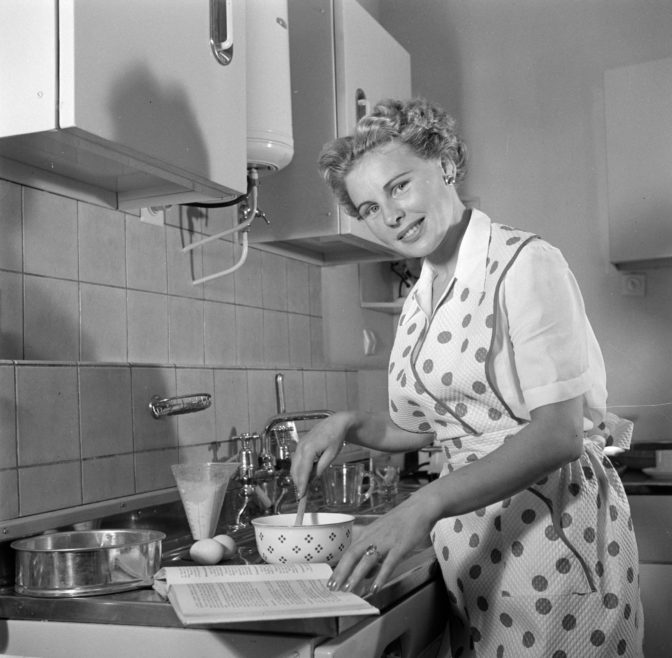One old person ago…
- Women did not have equal rights. Women in the Netherlands got the right to vote in 1917. But until 1956, married women needed permission from their husbands to enter into any legally binding contracts.
Two old people ago…
- Slavery was legal in the Dutch colonies of Suriname, the Netherlands Antilles, and the Dutch East Indies. Slavery was abolished in the East Indies in 1860 and in Suriname and the Antilles in 1863. Even then slaves were required to continue to work for their former enslavers for another ten years, so the effective end of slavery wasn’t until 1873.
Three old people ago…
- Serfdom was legal in the Netherlands, and still being practiced in parts of Overijssel and Gelderland in the east of the Netherlands. Serfs were bound to the farm could only marry or move away with their lord’s permission. This ended with the French occupation in 1795.
What major changes will happen in our lifetime?

Housewife making a cake. Credits: Willem van de Pol, collection Nationaal Archief (Public Domain)


If you mean by “entering into legally binding contracts” that women became “handelingsbekwaam”, then the date should read 1956 rather than 1976. Moreover, this legal rule went further than just legal issues. It also concerned permission by the husband for all (major) purchases and getting money from the bank. See: http://web.archive.org/web/20120313145424/http://historiek.net/overig/vrouwen-tot-1956-handelingsonbekwaam-5995
Thanks, I fixed the typo!
Two old people ago: slavery was also legal in the Netherlands East Indies (Indonesia), up to 1860, when it was abolished in the territories under direct Dutch control. See: https://nl.wikipedia.org/wiki/Geschiedenis_van_de_Nederlandse_slavernij#Tijdsverloop_afschaffing_slavernij_Nederland
Thank you, I added the information about the East Indies.
The same restrictions were on women in Quebec, Canada, by law and in practice in the rest of Canada well into the fifties. Banks wouldn’t lend money without a husband’s signature and national firms often wanted a husband’s agreement before hiring a married woman. I could understand the insistence on a spouse’s signature where a lien was being placed on property or similar but only if the same restriction applied to husbands’ actions.